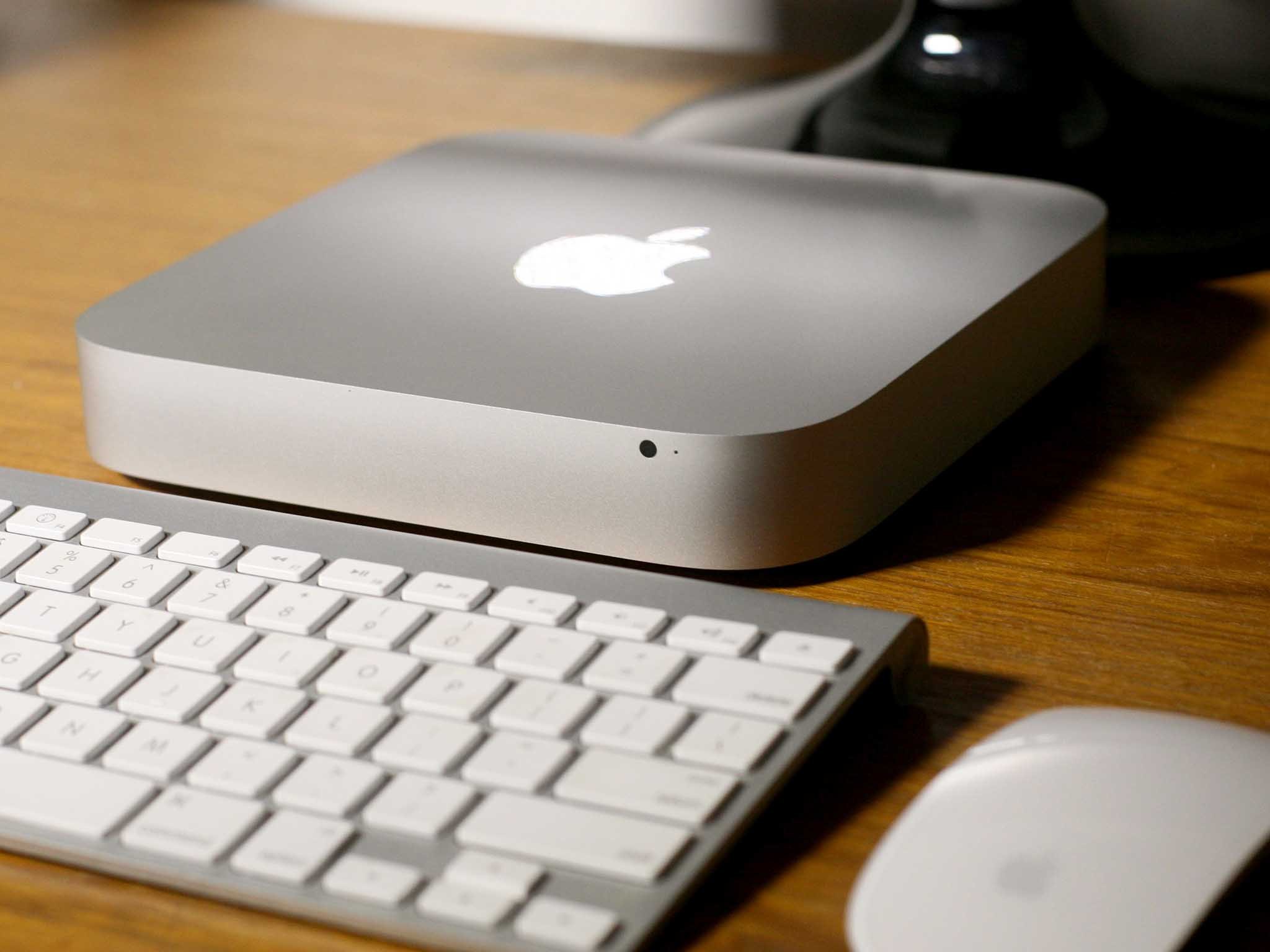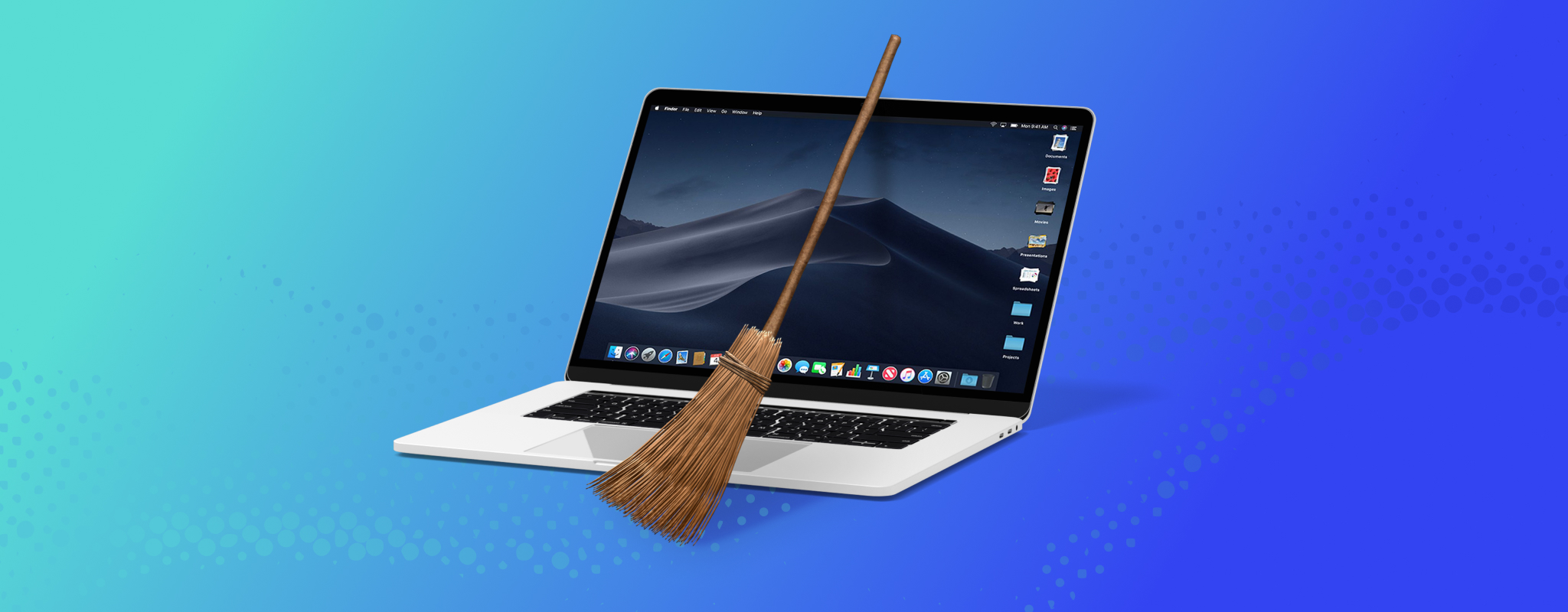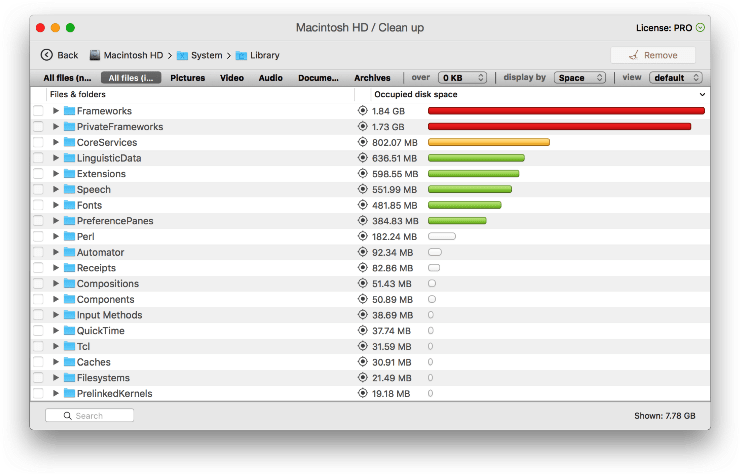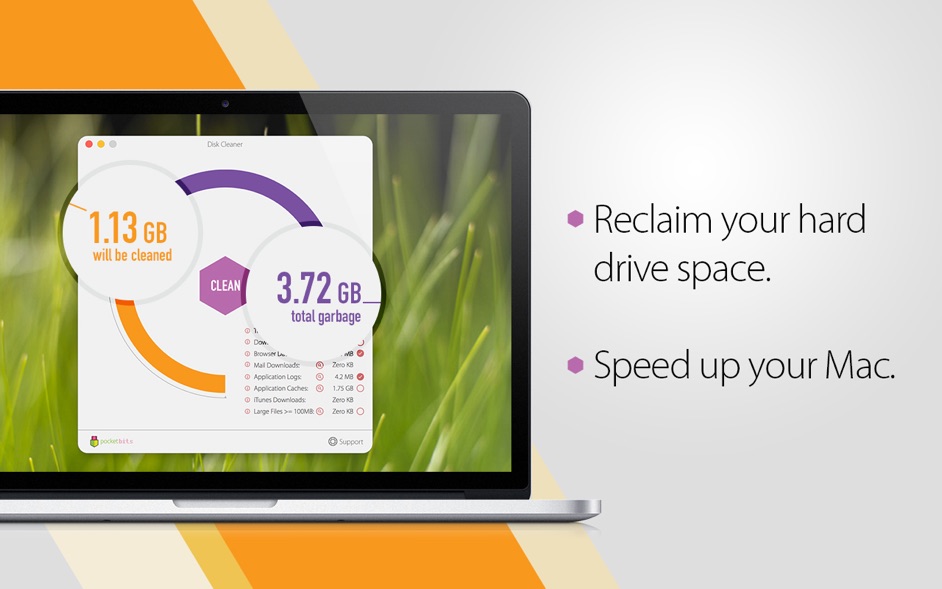- Clean Up Mac Hard Drive Free Trial
- Free Hard Drive Cleaning Software
- Clean Up Mac Hard Drive Free Mcboot
- Clean My Hard Drive For Free
- Free Hard Drive Cleaner
Easy and Free tutorial on how to free up your Mac's hard drive. Simple download and you're done! Download it here:. You’ve probably heard “Remove your cache” as a web browser.
So you’ve had your Mac for a while, and things don’t feel as fresh and clean as they used to? Although Macs don’t require a lot of maintenance for cleaning, those temporary files, app leftovers, and system cache do accumulate. These files may slow down your machine and take up a lot of valuable space. In this article, we share quick and easy ways to clean up your MacBook. If you want to clean up your Mac manually, jump to the section linked below. Let’s get started!
How to clean your Mac automatically
Here’s a simple diagram to explain the most common types of computer junk, sorted by size. Some of these, like Trash bin files, are easily reachable, while others are stored away in hidden system folders. Sadly, there’s no easy way to clear them up without special skills.
If you don’t feel like spending the next several hours cleaning your Mac manually, you can use a powerful cleaning tool CleanMyMac X to find and remove all the clutter your Mac contains. It knows which files are useless, how to find and remove them completely. CleanMyMac X has everything to finish the 3-hour task of a Mac cleanup in under 5 minutes. It will even clean up the junk you didn’t know about and give your computer a speed boost.
How to clean up system storage on Mac with CleanMyMac X:
- Download CleanMyMac X for free here.
- Run the app and go to System Junk.
- Click Scan.
- Press Clean to get rid of all junk.
Done! Now your Mac looks much better!
How to Clean Mac Hard Drive Manually
If you never performed an automatic or manual system cleaning — it means that your Mac has been collecting unnecessary files and clutter for years. You can quickly clean up your Mac with these easy steps.
1. Clean up cache
You’ve probably heard “Remove your cache” as a web browser troubleshooting tip. In fact, your Mac stores a lot of information in files called caches, allowing fast access to that data and reducing the need to get it from the original source again. Unfortunately, those files take a lot of space on your Mac, and instead of speeding things up, they slow your computer down. Therefore, if you want to give your system a boost, clean your Mac from the cache files.
There are two ways to do that: you can delete them manually or use a MacBook cleaner like CleanMyMac X to do the job for you. Of course, the second way is an easy and fast one. However, if you decide to clean up the cache manually, check out a comprehensive guide on “How to Clear Cache on a Mac.”
2. Uninstall apps you don’t use
The applications you’ve installed on your Mac take up space, of course. And over time when your Mac becomes full of different apps, it may start running slowly. How to clean MacBook? In the first place, you need to remove the apps you no longer use or need. To do this, right-click on the app you want to remove and choose Move to Bin.
You may be surprised to find out that sending an app to the Trash will not uninstall it completely because the app leftovers still remain on your Mac taking up a lot of storage. So, if you want to be a responsible Mac user, you need to uninstall applications the right way. Here’s a step-by-step guide on “How to Uninstall Apps on a Mac.”
Extra step: Trim down your login items
Login items are applications that run automatically upon startup. Nowadays, every second app tries to become as prominent as possible and get into your Login Items. First of all, you may not even know what they are (not all of them appear in the Dock). Secondly, such apps consume memory. That's enough reason to get rid of extra login items you don't need.
- Open System Preferences.
- Go to Users & Groups.
- Choose your nickname on the left.
- Choose the Login Items tab.
- Check startup programs you want to remove.
- Press the “–” sign below.
You’re done.
3. Clean out useless duplicates
Identical photos, music tracks you’ve added one time too many, saved and re-saved PDF files… all of that sits on your Mac and gobbles up storage. The storage that could be used for better purposes.
So how do you quickly weed them out? The fastest way is to use Gemini 2: The Duplicate Cleaner.
- Download and launch the app
- Click “Scan for Duplicates”, and watch as it quickly fetches them from different corners of your Mac.
- Once the scan is done, hit Review Results and check which copies you want to remove.
- Click Smart Cleanup to delete everything you’ve selected.
That's it. Now your Mac should be completely duplicate-free.
4. Empty the Trash
Clean Up Mac Hard Drive Free Trial
Even though you’ve deleted the files, they reside in your Trash bin taking up a lot of storage on your Mac. They are just waiting to be removed completely. If you want your precious hard drive space back, you need to empty the Trash.
Here’s how to clean your MacBook from the trash:
- Click and hold on the Trash can icon in the Dock.
- Click Empty and then Empty Trash.
The process is quite simple, right? There is even a more effortless way to clear Trash. CleanMyMac X scans your Mac for junk and lets you remove all trashed files. To do that, launch CleanMyMac X and press Scan. When the scan is completed, click Review Details to see what exactly CleanMyMac X has found.
I’ve already cleaned Bin a couple of weeks before, but over some time, almost a gigabyte of trashed files has accumulated. Now, I can simply click Back to Summary and then Run to clean Trash and system junk.
5. Reduce clutter
Apple has already thought about the clutter that can be generated on the Macs and provided a possible solution. Here’s how to reduce clutter on your Mac:

- Go to the Apple menu.
- Choose About This Mac and then Storage. Here you can see how much free space is left on your computer.
- Then click Manage.
Here’re some recommendations for saving space on your Mac. You can choose Review Files to examine apps, documents, and other files that are stored on your Mac.
You can choose any file in every category (Applications, Bin, Documents, etc.) and click Delete to remove it and optimize space. Look through other recommendations and make the necessary changes to use your Mac’s space more efficiently.
6. Delete large and old files
It has always been a rule of thumb among computer geeks, that you should keep a minimum of 15-20% of free space on your main hard drive. This is just a rough estimation, but the more free space you have, the faster your Mac works. A computer magazine once performed a test on this, which concluded that the difference in speed can reach as much as 35%. If you work with heavy graphics or video rendering, even more free space is recommended.
How to have more free space? Delete large and old files.
The first way is totally manual and requires you to find them one by one, while for the second way, you just need to make two clicks and CleanMyMac X will do the job for you.
How to clean up Mac with CleanMyMac X:
- Download CleanMyMac X (a link to a free edition of the app)
- Launch the program.
- Go to the Large and Old Files section on the menu.
- Click Scan.
- Review the details, select what to clean, and then click Clean.
That’s it!
7. Remove old iOS backups
Having your files backed up is a wonderful thing. But over time your Mac becomes overloaded with old backups that take gigabytes of storage on your hard drive. That’s why you should consider removing the old iOS backups you no longer need.
Each backup remains stored on your computer and is accessible via iTunes. To delete the old backups, you need to do the following:
- Choose the Apple menu and then select About This Mac.
- Go to the Storage tab and click Manage.
- Here, choose iOS Files.
- Select the backup you want to remove and click Delete.
- Confirm and you’re done!
That’s it! The backup files are gone from your Mac forever.
8. Wipe out Language files
Unused language localizations take up about1 GB of storage space. Mac applications come with language files for every language they support. It allows starting using the app in that language immediately. Cool, right? Not always. Just consider: when was the last time you used the app in Bengali or Korean? Since you don’t speak those languages, such files just waste space on your Mac. You need to remove the unnecessary language files and clean MacBook from that clutter.
How to delete the language files? Go to Finder > Applications, then right-click the app which language files you want to remove and choose Show Package Contents. Open the Resources folder and then find folders ending with “.lproj.” Every folder contains language files for one particular language. Note that for every app you should manually find and select the files to remove. But there is an automatic way to delete the language files that will save you tons of time — CleanMyMac X. Just download the application (for free) and it will do the job for you.
9. Delete old DMGs
Disk images (DMGs) often take up valuable space on your Mac. Here’s how to perform a Mac cleanup and get rid of those files:
- Open Finder and type “.dmg” in the search bar.
- Then delete all files that have .dmg extensions. Don’t forget to remove them from Trash as well.
CleanMyMac X allows you to locate and delete DMGs quicker. With its System Junk module you can remove unused disk image with a single click of a button:
Just press Clean and it’s done!
10. Sort your Downloads folder
Do you also download things and never get rid of them? Then, your Downloads folder probably needs a good old sort out. If you’re too scared to face that enormous pile of files, here’s a quick trick: sort all your downloaded items by date added. Then, scroll till the end of the folder, and you’ll see the dusty files that have been there for a while. Command-click to highlight multiple files and send them to the Trash.
Free Hard Drive Cleaning Software
11. Tidy up your desktop
Many people use Desktop as their primary destination for files. But this could be tricky because your OS treats every file on a desktop as an active window. When items on your desktop are too many, Finder gets substantially slower. This leads us to the most compelling advice in this article — cleaning up desktop does miracles!
Rather than just leaving every file on your desktop, organize them into folders. The latest macOS does that automatically thanks to the Stacks feature: right-click your Desktop and choose Use Stacks. Now all your files are grouped and you can delete them with a click. You can also use Google Drive, Dropbox, or any external storage device to save your files and keep your desktop tidy.

12. Clean your Mac’s keyboard
Our last but not least advice is to wipe your Mac’s keyboard. As you use your keyboard daily, it quickly gets dirty. Moreover, all those crumbs may live under the keys forever!
If you were wondering how to clean Mac’s keyboard, there are no special rules here. You can try blowing the dust and other particles out of your keyboard once in a while. Disinfecting wipes and alcohol-based sprays may also prove useful. Just choose the piece of fabric and wipe the keys gently to make them clean and shiny!
All in all, be careful with your system files. Don’t delete things you’re not sure about. If you are not completely confident that you can manage the task by yourself, better use a dedicated utility like CleanMyMac X to get a fresh and clean Mac in just two clicks. Here's the video describing quick tips to clean up your Mac:
Happy cleaning!

Why clean your Mac’s hard drive?
The most obvious reason is that you're running out of space on your boot disk. And, while there are many things you can do to free up disk space, including using Apple’s own storage management tools, it’s a good idea to start by getting rid of the junk that’s accumulated and that you don’t need. That way, not only will you free up space, you will also give your Mac a boost and help it run more smoothly.
What are the files that I should clean up?
Most of them are files that are left behind by applications, many of which you probably no longer use, and some of which you may have deleted and thought you’d uninstalled. These include:
Application libraries
Preferences files
Launch agents
Temporary cache files that were never deleted
Log files
In addition, web browsers store files on your Mac, including:
Cookies
Cache files of their own
History
Every email client you use stores attachments you’ve downloaded. You may also have language files on your Mac for languages you don’t need. And we haven’t even touched duplicate folders and outdated backups.
All these files take up space and could slow down your Mac.
Use automated junk detector
There are a number of things you can do by yourself to clean up files on your Mac’s main disk. However, I’ve found that the quickest and easiest way is to use a tool designed specifically for the purpose. There are several available, but I use CleanMyMac X because it has a ton of great features and it’s notarized by Apple. Here’s how to use its System Junk tool to get rid of junk files.
Here you can download a free version of this tool.
Install the latest version of CleanMyMac X.
Follow the instructions on screen to install it and then launch it from your Applications folder.
Click System Junk in the sidebar.

When it’s finished, it will tell you how much junk it has found. You now have two choices: get rid of it all with one click, or review what it’s found. To get rid of it, just press Clean. To find out more, choose Review Details.
In the Review Details view, you can see that everything CleanMyMac has found has a checkmark against it. If you see anything you don’t want to remove, just uncheck the box next to it.
Here is what I was able to find on my Mac:
That’s 6 gigs of very odd technical files that are almost impossible to dig out by yourself.
Tip: CleanMyMac X can also identify and remove Malware, which will also help keep your Mac’s drive clean.
Use Apple’s storage management tools
Apple has realized in recent versions of macOS that users who swap a computer with 1TB hard drive for 128GB or 256GB SSD are going to have issues with storage. And to that end, it has created a storage management tool that recommends ways in which you can save space, and provides options for discovering what’s taking up space and helping you do something about it.
Click on the Apple menu and choose About this Mac.
Select the Storage tab and press the 'Manage’ button.
With Recommendations selected, read through the list and press the button next to any that are relevant to you.
For example, next to Reduce Clutter, press Review Files. You can now organize files in the list by size, or see only those in your Downloads folder or that come from unsupported apps. Or you can choose File Browser to see all your files.
If you see any files you don’t need, press Delete.
Go through the rest of the items on the list in the left of the window and take any action that will clean up your hard drive, like removing image attachments from Messages, or deleting iOS device backups.
Tip: Don’t forget to empty your Trash after you’ve deleted some files.
Uninstall applications
Some apps come with their own uninstallers and where that’s the case, the best way to uninstall them is to use that. However, most applications don’t have such a neat solution. And many of us still think that simply dragging an app’s icon to the Trash will uninstall it. It won’t. Instead, it will leave tens, or even hundreds of files scattered in various folders on your drive, taking up space and possibly causing conflicts later on.
The best way to get rid of applications that don’t have their own uninstaller is to use a general uninstaller, like CleanMyMac X. It’s not the only uninstaller around, but it’s the one I prefer to use, because it’s quick, easy to use, and has lots of other functions, too.
Open a new Finder window and click Go (in the top menu).
Choose Applications
You may start by deleting your duplicate apps (see my screenshot)
Once again, you can drag your unwanted apps to the Trash. That’s good but it leaves behind leftovers as many Mac users know.
Luckily, if you’ve downloaded and installed CleanMyMac X (see above), it’s easy to uninstall all apps and their remainders completely.
Launch CleanMyMac X — download the app here (Apple-notarized version)
Choose Uninstaller in the sidebar.
Locate the app you want to uninstall in CleanMyMac’s main window (Tip, you can narrow down you search by clicking on the name of a developer in the middle window or category).
Check the box next to the app or apps you want to uninstall (you can uninstall multiple apps simultaneously) and press Uninstall.
Tip: If an app is misbehaving but you want to keep it around, you can click on the dropdown menu next to its name, labelled ‘Uninstall’ and choose Reset. The press the Reset button. That will return the app to the state it was in when it was first installed and should fix any problems.
Remove user account you don’t need
If you’ve had your Mac for a few years, you may have set up multiple user accounts. Perhaps a friend or family member also used the Mac, or maybe you set up one user account for work and one for leisure. Whatever the reason, if there are user accounts on your Mac that you no longer need, getting rid of them will help clean up your Mac’s hard drive.
Click on the Apple menu and choose System Preferences.
Select Users & Groups.
Click the padlock and type in your admin password.
Select the user you want to remove and press the ‘-‘ button.
Choose Delete the home folder to get rid of it and free up space. Or Save the home folder as a disk image to keep it. Remember to copy the disk image to another location on an external disk and delete it from your boot drive afterwards.
Press Delete User.
Clean Up Mac Hard Drive Free Mcboot
The user account and all the files in the home folder of that account will now be deleted – unless you chose to keep the home folder. The great thing about this tip is that each user account contains much more data than you may realise, since each has its own Library folder with possibly thousands of files in it.
More ideas to free up hard drive space:
- Move your Photos to Photos.Google.com — it offers almost limitless storage and there is a Mac version of Google Photos you can download.
- Get a duplicate finder app for Mac (Gemini 2 is a good pick) — duplicates can be extremely large.
- Find large unwanted media — use the Space Lens tool.
Discover your largest folders — build a visual map of your drive
Clean My Hard Drive For Free
In addition to the thousands of smaller files taking up space on your Mac’s hard drive, it’s likely that there are a number of very large folders and in some old files you don’t need access to regularly. Moving large files to a different location, like an external hard drive can free up lots of space very quickly, while archiving old files will also clean up your Mac’s hard drive without causing any inconvenience.
You could track down these files manually, by using the Finder to create a smart search based on file size or creation date, but CleanMyMac X has a tool called Space Lens that allows you to do it very quickly and easily.
Choose Space Lens in CleanMyMac's sidebar.
Press Scan.
You will see in the right hand window, files listed according to their size.
Free Hard Drive Cleaner
Your Mac’s hard drive can become cluttered with files once you’ve been using it for a while, and, as well as taking up space, these files can slow down your Mac and cause performance issues. Fortunately, it’s easy to clean up your Mac, by following the steps above. And it’s even easier if you use CleanMyMac X to help.